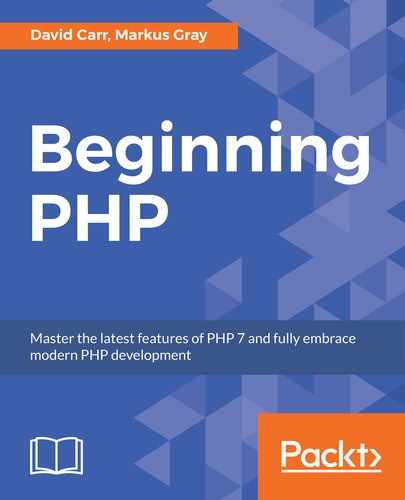Book Description
Learn all the fundamentals of PHP with a book that blends theory with practice to build up the skills you need for modern web development.
Key Features
- Brush up on basic PHP 7 syntax and work with variables, data types, arrays, and loops
- Master advanced concepts like building your own frameworks and creating your own applications
- Apply your newly learned PHP skills to a variety of real-life business scenarios
Book Description
PHP is the preferred server-side scripting language for tech giants such as Facebook, Wikipedia, and Tumblr despite full-stack JavaScript gaining popularity with upcoming developers. This is because PHP performs better when dealing with heavy computations on the back end. In this book, you'll learn everything you need to get up and running with the latest version of PHP, including package management with tools such as composer, secure database operations, and a whole host of other best practices that will help you stay a step ahead of traditional programmers.
What you will learn
- Understand the fundamentals of PHP and work with classes and inheritance
- Learn about database operations and package management with composer
- Tackle common security concerns and pitfalls using authentication and validation
- Build effective PHP applications and frameworks for your business needs
Who this book is for
If you're already familiar with another programming language and want to learn about the fundamentals of PHP programming, you'll find the flow of this book to be an ideal fit. Having a prior understanding of HTML, MySQL, CSS, and JavaScript will be beneficial, but is not mandatory.
